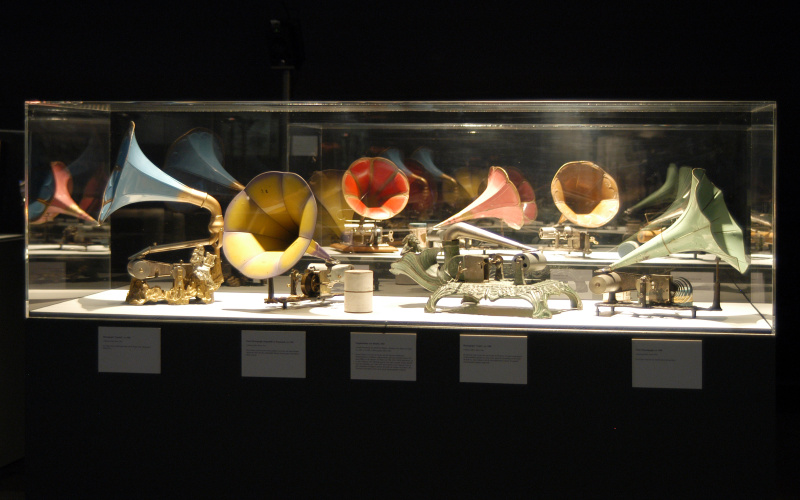- Event
- Opening
Phonorama (opening)
A Cultural History of the Voice as a Medium
Sat, September 18, 2004 6:00 pm CEST
- Location
- Foyer
In the modern public arena, it is the voice rather than texts and images that stands for social synthesis. It functions as a medium of democratic, trans-national order, as is indicated by the use of the voice that is implicit in many terms, such as the right to vote, ballot paper, poll, agreement and unanimity. Those who raise their voices – and be it in the figurative sense – are performing an activity. This is as true of late industrial societies as it was in earlier times.
The voice mediates between abstraction and intimacy. In this respect it is superior to a text or an image. It has an inherent tendency towards synaesthesia: texts generate the 'inner voice' of the reader, whereas the images in a film or a television news broadcast 'accompany' the voices of the actors and presenters – not vice versa. In media history terms the telephone network – the connecting of voices – was the real predecessor of the Internet; it was radio that paved the way for the success of television. It is no accident that the voice appears ever more frequently as a feature of aesthetic and media productions.
A cultural and media history of the voice implies a whole variety of possible dimensions and connections. The spectrum ranges from the mythical voice of God, the seductive voices of the Sirens and the voices of the dead to the voices of dreams, the voices of angels, the 'divine castratos' and prima donnas. The opera and the cathedral can be contrasted with the political arena, the forum of rhetoric or the lectern. The voice is the 'object' which – in the form of a mother’s voice, for instance – precedes the constitutional history of the individual; it is the 'transitional object' that is revived, as it were, in the voice of the hypnotist, the therapist or the artist. Voices also function as media in the sense that they create an atmosphere or 'moods', which occasionally resist rapid translation and the attribution of meaning.
In short, the voice is the subject matter for an exhibition in its own right. This exhibition links the different perspectives to be found in the history of culture, music, art and the media; it opens windows on the history of technology and political fascination. Objects and voices from international museums, collections and media and voice archives can be seen and heard along with installations and projects designed especially for the exhibition.
The curator is Brigitte Felderer, a cultural scientist from Vienna.
The voice mediates between abstraction and intimacy. In this respect it is superior to a text or an image. It has an inherent tendency towards synaesthesia: texts generate the 'inner voice' of the reader, whereas the images in a film or a television news broadcast 'accompany' the voices of the actors and presenters – not vice versa. In media history terms the telephone network – the connecting of voices – was the real predecessor of the Internet; it was radio that paved the way for the success of television. It is no accident that the voice appears ever more frequently as a feature of aesthetic and media productions.
A cultural and media history of the voice implies a whole variety of possible dimensions and connections. The spectrum ranges from the mythical voice of God, the seductive voices of the Sirens and the voices of the dead to the voices of dreams, the voices of angels, the 'divine castratos' and prima donnas. The opera and the cathedral can be contrasted with the political arena, the forum of rhetoric or the lectern. The voice is the 'object' which – in the form of a mother’s voice, for instance – precedes the constitutional history of the individual; it is the 'transitional object' that is revived, as it were, in the voice of the hypnotist, the therapist or the artist. Voices also function as media in the sense that they create an atmosphere or 'moods', which occasionally resist rapid translation and the attribution of meaning.
In short, the voice is the subject matter for an exhibition in its own right. This exhibition links the different perspectives to be found in the history of culture, music, art and the media; it opens windows on the history of technology and political fascination. Objects and voices from international museums, collections and media and voice archives can be seen and heard along with installations and projects designed especially for the exhibition.
The curator is Brigitte Felderer, a cultural scientist from Vienna.
Event Website
Imprint
- Curator
Organizing Organization / Institution
ZKM
This Event - Is part of
Accompanying program
Accompanying Program
